Researchers from the University of Utah’s College of Engineering continue to develop forward-thinking projects that one day could help people around the world. This year, seven faculty members from the college received the prestigious National Science Foundation’s Faculty Early Career Development Program (CAREER) Awards to fund their research.
These highly competitive $500,000 grants are given to early-career faculty members “who have the potential to serve as academic role models in research and education and to lead advances in the mission of their department or organization.”
Here are this year’s recipients of the award from the College of Engineering and a description of their projects. The grants last five years.
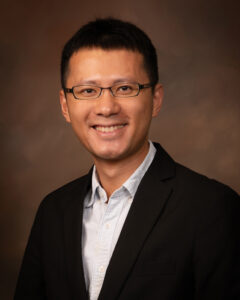 Tsung-Wei Huang (Electrical & Computer Engineering)
Tsung-Wei Huang (Electrical & Computer Engineering)
“HeteroTime: Accelerating Static Timing Analysis with Intelligent Heterogeneous Parallelism”: This CAREER project researches novel static timing analysis (STA) algorithms that deliver order-of-magnitude performance breakthroughs by harnessing the power of heterogeneous parallelism and machine learning. It will research novel graphics processing unit (GPU) kernel algorithms and heterogeneous task decomposition strategies to accelerate critical STA problems, including graph-based analysis and path-based analysis, from a novel computing perspective. Furthermore, it will establish a learning-based task execution environment to achieve adaptive performance optimization to different STA workloads under real operating conditions. The research outcomes will enable ultra-fast analysis and optimization algorithms over the current state-of-the-art and substantially improve both turnaround time and quality of results (QoR) for design closure flows.
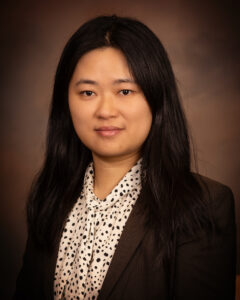 Huiwen Ji (Materials Science & Engineering)
Huiwen Ji (Materials Science & Engineering)
“Probing and Exploiting Short-range Order in Crystalline Materials for Fast Ion Transport”: Fast ion conductors are major players in energy storage, a strategically critical area for the holy grail of vehicle electrification and the best solution to the intermittent and random nature of many renewable energy sources, such as solar and wind. Past research has heavily focused on ion conductors with perfect prototype structures. As a result, further materials discovery was limited to incremental improvement and a narrow range of chemistry. In this project, with support from the Solid State and Materials Chemistry program in the Division of Materials Research, the principal investigator investigates structurally-disordered ion conductors with compositional flexibility that can potentially alleviate the industry’s reliance on any single critical metal source which has broad societal impact. The project also integrates education and research to increase enrollment, diversity, and retention of STEM students, creating America’s future STEM workforce. In pursuit of these goals, the PI creates demonstration kits for college teaching and K-12 outreach, a crystal growth course with hands-on research-based activities, and a novel augmented reality experience for interactive crystallography pedagogy. The PI collaborates with the Utah STEM Action Center to reach students from backgrounds underrepresented in STEM and school districts historically underperforming in STEM and deliver them the kits and demonstrations.
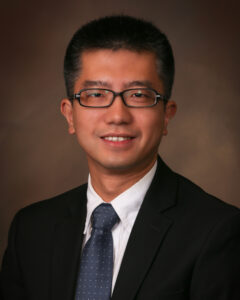 Mingyue Ji (Electrical & Computer Engineering)
Mingyue Ji (Electrical & Computer Engineering)
“Heterogeneous Elastic Computing over the Cloud — from Theory to Practice”: Modern cloud-services rely on virtual machines due to their high efficiency and flexibility. Alongside regular services, current new offerings from cloud-service providers allow exploiting under-utilized virtual machines at a fraction of the original cost. Such computing resources, however, are highly heterogeneous and elastic. Heterogeneity means that virtual machines can have different computational speeds and storage constraints. Elasticity means that these virtual machines can be preempted under short notice (on the order of minutes) if a high-priority job appears; on the other hand, new virtual machines may be available over time to compensate for any shortage of computing resources. Such behavior can result in computational failure or significantly increase computing time. This project formulates new heterogeneous elastic computing frameworks with both coded and uncoded storage placements. Then, it develops novel methodologies using combinatorial and information-theoretic tools to establish fundamental tradeoffs for such systems. Using these theoretical tools, the project designs low-complexity algorithms for real applications and evaluates them on Amazon Elastic Compute Cloud (Amazon EC2) in order to show significant gains of the proposed approaches compared to the state-of-the-art solutions. The project is structured around research topics: (1) heterogeneous coded storage elastic computing; (2) heterogeneous uncoded storage elastic computing; (3) secure uncoded storage elastic computing from user’s perspective and (4) heterogeneous elastic computing: convert theory to practice.
 Mingxi Liu (Electrical & Computer Engineering)
Mingxi Liu (Electrical & Computer Engineering)
“Scalable and Secure Control of Distributed Grid-Edge Resources for Enhanced Grid Reliability”: The growing penetration of renewable energy brings unprecedented operational challenges to the modern power system, demanding additional power system flexibility to enhance grid reliability. This NSF CAREER project aims to bolster the nation’s grid decarbonization and energy security by developing a grid-edge resource (GER) management framework to increase power system flexibility. The project will bring transformative changes to GER management by overcoming three intertwined challenges, i.e., high scalability requirements, major privacy concerns, and surging cybersecurity risks. This will be achieved by synthesizing ideas from optimization, machine learning, statistics, and cryptology to establish an efficient, private, and secure GER control framework. The intellectual merits of the project include: (1) developing a scalable framework that enables efficient cooperative control of heterogeneous GERs; (2) investigating privacy preservation measures for strongly coupled decentralized GER control; (3) investigating models, and detection and mitigation strategies of stealthy cyber-attacks that target at decentralized GER control algorithms. The broader impacts of the project include: (1) unleashing heterogeneous GERs to enhance grid reliability and deepen grid decarbonization; (2) advancing the grid’s ability to integrate increasing amounts of renewable generation and GERs in a cost-effective, secure, and reliable way; (3) providing the industry with insight into developing new market products. The integrated education plan will spread control and power system concepts to youth-in-custody, K-12 students, and underrepresented groups, motivating them to pursue STEM education and careers.
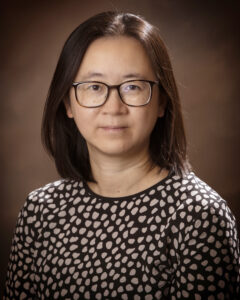 Bei Wang Phillips (School of Computing)
Bei Wang Phillips (School of Computing)
“A Measure Theoretic Framework for Topology-Based Visualization”: Data generated from multiphysics simulations, such as binary black hole mergers and fluid dynamics, have experienced exponential growth because of the growing capabilities of computing facilities. At the same time, data-intensive science relies on the acquisition, management, analysis, and visualization of data with increasing spatial and temporal resolutions. This project develops a new set of approaches to support the core tasks in scientific data visualization (such as feature tracking, event detection, ensemble analysis, and interactive visualization) in a way that is more reflective of the underlying physics using measure theory. The results will be instantiated by a collection of open-source software tools to be deployed for the collaborating scientists in materials science and high-performance computing, and the larger research community.
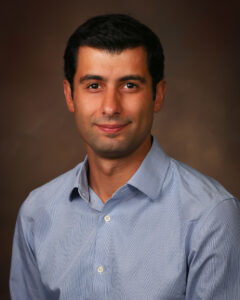 Mostafa Sahraei-Ardakani (Electrical and Computer Engineering)
Mostafa Sahraei-Ardakani (Electrical and Computer Engineering)
“Deregulated Market for Flexible Transmission”: Achieving the United States’ climate goals requires a massive level of investment in new power transmission infrastructure. This NSF CAREER project aims to substantially reduce this need by improving the transfer capability of the existing transmission network. This will be achieved by designing new markets that provide incentive for efficient operation of flexible transmission. It is expected that such incentives will lead to enhanced utilization of the existing grid and pave the way for innovation, making the nation’s power grid more modern, flexible, resilient, and economical. The intellectual merits of the project include development of new theories and methods that enable deregulated and market-based operation of flexible transmission, as opposed to today’s regulated structure. Guided by engineering and economics principles, the project will ensure that the power flows stay within the limits, social welfare is improved, and the market is revenue adequate. The broader impacts of the project include substantial savings in avoided new transmission project costs, enhancement of the efficiency of the nation’s electric power infrastructure and offering an economical pathway to adoption of increased renewable generation.
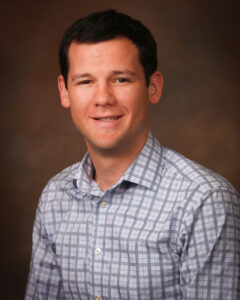 Jason Wiese (School of Computing)
Jason Wiese (School of Computing)
“Making Smart Hospital Rooms Useful”: Integrating smart home technology into hospital patient rooms should make hospitals more efficient, improve patient recovery and rehabilitation, and enhance the experience of being in the space for patients, their visitors, and employees. Yet, research on smart homes cannot achieve this vision. It does not investigate how the technology can support patient recovery, nor does it address the complex challenges that can arise when multiple people use a smart space as a workplace and a living space at the same time. Thus, hospital administrators and designers need guidance on what value this technology can provide in their hospital. This project explores how the design of smart hospitals can support: (1) patient autonomy and recovery, and (2) the complex, interacting workflows of hospital employees from physicians to custodial staff. The team of researchers will study this by examining how patients, their visitors, and hospital employees currently use hospital rooms that are already equipped with smart home technology and will use those insights to guide the development of new software to improve the usefulness of smart patient rooms. For patients and their families this project will result in rooms that are more comfortable and easier to use and control; in particular, many patients have physical impairments that may amplify the value of these technologies. For hospital employees, it will lead to an improved work environment that better supports them in caring for patients and completing work tasks. For researchers and designers, this will lead to a new understanding of smart spaces beyond smart homes.